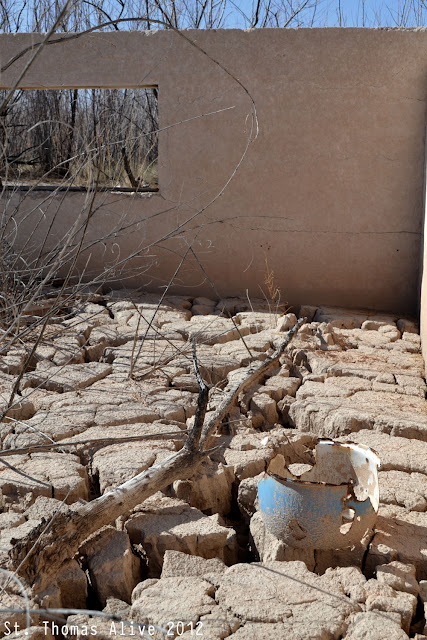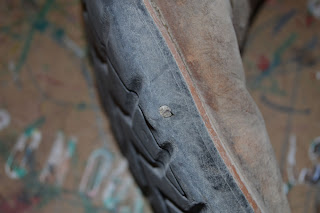March 3rd 2012 was the St. Thomas Alive celebration. The community came together and contributed to help bring St. Thomas history come alive for a day at the historic town site.
The opening ceremony was started off with a posting of our nations color, a hymn Come Come Ye Saints, sung by attendee's led by Robin Maughn and organ played by Connie Whitney, (this was the same organ that was played in the 1965 celebration), a prayer by Donald Whitney and opening remarks by President Mathew Messer.
Many historical drama's were performed at the foundations of the St. Thomas School house bringing to life different events that took place in St. Thomas and people who lived there.
Entertainment was also provided between plays by local residents of the Moapa Valley
Scenes from Ron Dalley's play, One For The Muddy were also performed at the St Thomas School House that depicted different events that took place in this early pioneer settlement. The above picture is when the Lincoln County Tax Collector told the residents to pay their taxes or get out. It was not well received
Other scenes from plays depicting the harsh realities of settlement in the desert
A Senatorial commendation from Senator Heller was presented to the Logandale Nevada Stake, Partners In Conservation (PIC) and the Park Service.
The Maypole was also braided down at St. Thomas. A tradition which began in St. Thomas and is still carried out by the school children in Moapa Valley in the May Day Dances.
A view of some of the attendee's at the St. Thomas Alive celebration
Many of the participants in the days events wore period dress adding to the historic setting at St. Thomas
The event closed with remarks by Logan Call, a descendant of Anson Call the namesake of Callville, remarks by Susan Whipple, a descendant of the pioneers who lived and settled in St. Thomas, the hymn God Be With You Till We Meet Again, and a prayer by Berkley Marshall.
Till we meet again
















































